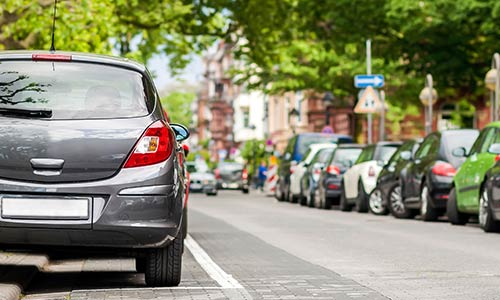
Fog lights: What are they and when should you use them?
Last updated July 13th, 2023
Fog lights can improve your visibility in conditions where it is difficult to see ahead.
When used properly, they can help to reduce the risk of road accidents. However, many drivers are unclear on exactly when and how to use this important safety feature.
In this guide, we will clarify the purpose of fog lights and when they should be used. We’ll also explain how to turn on your fog lights, how to tell when they’re activated – and when it is illegal to use them.
Value your car in under 30 seconds
What do fog lights do?
Fog lights are used to make it easier to see ahead when driving in conditions that restrict visibility such as snow, mist, fog and heavy rain. Rear fog lights are designed to cut through these weather conditions so that drivers behind you are aware of your presence.
When should you use your fog lights?
You should only use your fog lights in conditions where visibility is significantly reduced.
After all, fog lights have to be very bright to cut through harsh conditions, meaning they are bright enough to dazzle other road users if switched on unnecessarily. Rear fog lights may also obscure your brake lights and parking lights.
Generally, you should leave your fog lights switched off if you can see more than 100 meters ahead.
How to turn on your fog lights
The way to switch on your fog lights will vary depending on your car’s make and model. However, fog lights can usually be activated using a button on the dashboard or with the indicator stalk.
How do you know if your fog lights are on?
Most vehicles feature an illuminating symbol on the dashboard or driver display to indicate that the fog lights are switched on.
There are separate, slightly different symbols to represent front fog lights and rear fog lights. Both are represented by an oval-shaped lamp with three diagonal lines intersected by a wavy vertical line (with the lines on the left side of the lamp for front fog lights - and on the right of the lamp for rear fog lights).
Front fog lights symbol

Rear fog lights symbol

Should I activate my fog lights in daytime if visibility is poor?
You can activate your fog lights at any time of day or night, providing visibility is restricted to 100 meters or less.
Should you turn off your fog lights when visibility has improved?
You should continue to monitor weather conditions and visibility whilst your fog lights are on – and switch them off once visibility improves. If you use your fog lights in clear driving conditions, you run the risk of dazzling or blinding other road users.
When is it illegal to drive with fog lights on?
There are strict rules concerning the use of fog lights. You could face a roadside fine if you’re caught driving with your fog lights switched on unnecessarily.
Do all cars have fog lights?
All cars in the UK are legally required to have at least one rear fog light, fitted to the centre or offside rear of the vehicle. Front fog lights are not legally required but are commonly included as standard with high-end cars – and are usually mounted below the headlights.
Why don’t all cars have front fog lights?
Front fog lights are seen as an enhancement rather than a necessity, with many manufacturers choosing to reserve front fog lights for their more expensive vehicles.
Some modern headlights now also automatically feature bright LED beams which are designed to adapt to and improve visibility in conditions that would call for the use of front fog lights.
What is the difference between fog lights and headlights?
It’s a common misconception that fog lights are one of many types of headlights.
Fog lights are designed to cut through conditions that affect visibility, such as mist and fog. Conversely, headlights are reflected by fog, so having full beam headlights switched on in foggy conditions can actually decrease visibility.
Frequently Asked Questions
No, fog lights are stronger and more focused than high beams.
Therefore, they should not be used in the same manner as high beams, which are designed to illuminate the road when driving in the dark.
You shouldn’t use fog lights in heavy rain (unless it stops you from seeing over 100 metres in front of you). Remember, if you are caught using your fog lights unnecessarily, you could face a fine.
Yes, fog lights are bright enough that they may dazzle or blind other drivers, which is why there are strict rules around their use.
No, fog lights do not turn on automatically. They can usually be activated by pressing a button on your dashboard or choosing a function on your indicator stalk.





